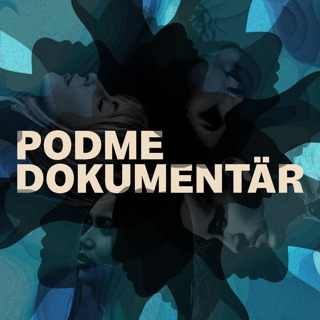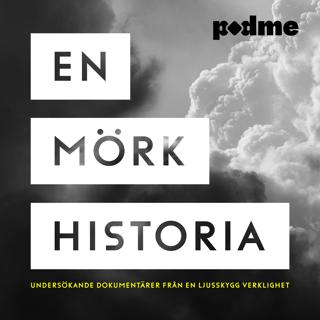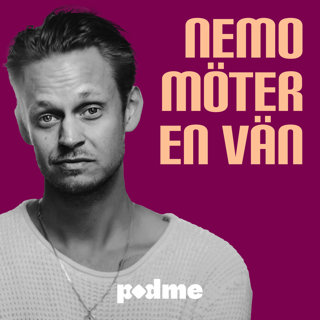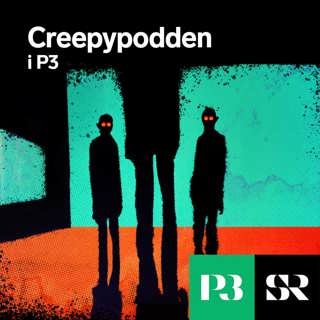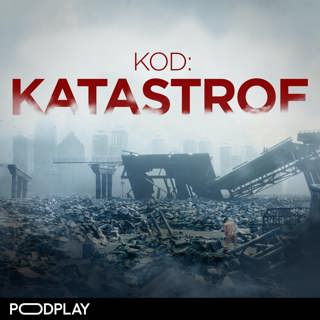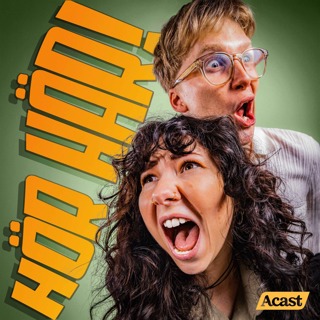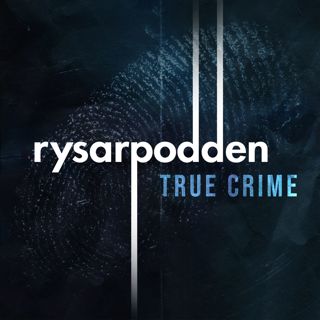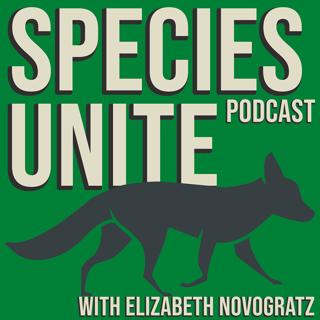
Dr. Patricia Wright: For the Love of Lemurs
"He called me into his office and he said, 'you see that picture above my desk?' I said, 'yes.' It kind of looked like an animal that reminded me of a squirrel. He said, 'that is a lemur that we think is extinct in the wild. If you can, please go to Madagascar and find out if it's extinct or not.'" – Patricia Wright Dr. Patricia Wright is an anthropologist, a conservationist, and a professor at Stony Brook University in New York, and she's probably the world's leading expert on lemurs. There are over 100 species of lemurs, which are prosimians - a type of primate and they only exist on the island of Madagascar. Patricia spends half her time, six months a year in Madagascar studying lemurs, and has done so since the 80s, when she discovered a new species of lemur, the Golden Bamboo Lemur, and she also established Ranomafana National Park. It is almost an understatement to say that Patricia is a trailblazer— she has done the impossible again and again. Her story is will astound you.
4 Apr 202455min

Danielle Celermajer: Summertime: Reflections on a Vanishing Future
"When those fires happened, it was about 8 o'clock in the morning. It goes completely black, so the sky is completely black. There's no light. The sound is like being under a train. It's unbelievably loud. And of course, the heat. You are right in the heat of the fire and the smell and the taste. So, every one of his senses was taken from one world. A world where it was light, where he could move around to another world without the meta narrative that human beings have, that we're in an age of climate catastrophe." – Danielle Celermajer Danielle Celermajer a professor of sociology and criminology at the University of Sydney. She's deputy director of the Sydney Environment Institute and lead of the Multispecies Justice project. Her research focus is on Multispecies Justice, or how the concepts, practices and institutionalization of justice needs to be transformed to take into account ecological realities and the ethical standing of all earth beings. Danielle lives on a multi-species community in rural Australia. She lived through Australia's Black Summer fires in 2019/2020 and wrote a book about them called, Summertime: Reflections on a Vanishing Future. It's a book that should be required reading for the entire world. Please listen, share and read Summertime: Reflections on a Vanishing Future. To learn more go to speciesunite.com
27 Mars 202441min

Nicole Green: Better Science
"There's this hidden curriculum, right? With dissection you're supposed to be learning the anatomy, the physiology of a particular animal. But really, what students are learning is that these animals are meaningless. They're basically just a tool for you to cut into and then discard after you're done with your so-called learning." – Nicole Green In US schools, kids dissect on millions of animals - frogs, dogs, cats, pigs and many other species and none of it is necessary. We have solutions and alternatives that are far better than cutting up dead animals. Nicole Green is the director of Animalearn, a national advocacy program that helps educators and students find innovative, non-animal science teaching resources. For over 20 years Nicole has worked to enlighten the public about the latest technology that is available in the science education sector, including AR/VR. Nicole and Animalearn are bringing these solutions to teachers, schools and kids all over the country. If you want to learn more, or rent free, humane alternatives for your classroom, go to the Science Bank.
15 Mars 202435min

Carl Safina: What Owls Know, What Humans Believe
"We live so disconnected from the natural world, and many people live much more disconnected than I am because I've made the natural world my life, my work. But if it's still surprising me and we live so disconnectedly, why is that? Because these owls have been here, all these other creatures have been here since before we got here. They're a normal part of the world. And yet what they do and what they can do, what they're capable of, is so surprising. Why is it so surprising? Why don't we know? Is it a limitation of our human intelligence and our human emotional capacity, or are we taught our disconnection?" - Carl Safina Carl Safina is an ecologist and author who writes extensively about our human relationship with the natural world and what we can do to make it better. His most recent book is called, Alife and Me: What Owls Know, What Humans Believe. It's about rescuing a baby owl, watching her grow up, and what he learned from her and himself in the process. And, it's about our relationship with nature and the beauty and the magic that surrounds us. His writing has won several awards, including a MacArthur Genius Prize, Pew and Guggenheim fellowships, and the John Burrows, James Beard, and George Rabb metals. He is the first Endowed Professor for Nature and Humanity at Stony Brook University and the founding president of the not for profit, The Safina Center.
5 Mars 202446min

Lisa Jones-Engel: STOP the Georgia Monkey Farm!
"One after another, citizens came up. And they just hammered that council with additional concerns. You know, one of the guys, his place is 500ft from there. He's like, 'what do you think this is going to do to me, to my family? How dare you expose me and my family and this community! None of you all live around there. How could you have not brought this to a vote?' A woman got up and started talking about the research modernization deal. Another woman got up and started talking about land values. A man got up and started talking about malaria. I mean, it's just one after another. They came up and I just, I don't know… I could have just started levitating because I was so buoyed by what this community was doing. And it has not stopped since then." – Lisa Jones-Engel There's a small town in Georgia called Bainbridge. It has 15,000 residents, and recently those 15,000 residents were duped by their city and county officials. What happened was that some people came in and proposed a deal to build a $400 million monkey breeding facility, and city and county officials not only agreed to do it, but they gave them almost $60 million in handouts, a 20-year tax abatement, and hundreds of acres of public land. And when the people of Bainbridge found out, they reached out to PETA's Senior Science Advisor, Dr. Lisa Jones Engel. Lisa spent many years working with primates in biomedical laboratories. She knows more about the industry than just about anyone. In 2019, when she couldn't take it anymore, she left the biomedical world and joined forces with PETA with the aim to take the primate testing industry down. And that is exactly what she's doing.
21 Feb 202448min

Faraz Harsini: The Leaders of the Future
Dr. Faraz Harsini has been advocating for animal rights for over a decade. He is the CEO and founder of Allied Scholars for Animal Protection (ASAP), a non-profit organization that supports students who are interested in advocating for animal protection and pursuing careers that can make a difference. He is also a Bioprocessing Senior Scientist at the Good Food Institute, where he works on advancing scientific and technological methods to produce alternative proteins on a large scale. Dr. Harsini's educational background includes a Bachelor's degree in chemical engineering, with a focus on process design and nanobiotechnology. He also has a Master's degree in biotechnology and cancer research, as well as a PhD in Cell Physiology and Molecular Biophysics. Before joining GFI, he worked in the biopharmaceutical industry, developing therapeutic proteins for diseases such as Covid19, influenza, cancer, and inflammatory diseases. Dr. Harsini collaborates with organizations like PCRM to promote alternatives to animal testing and to combat animal exploitation. He speaks at colleges about his personal experience as an immigrant, a first-generation college student, and a member of the LGBT community, connecting the oppression of animals to other forms of oppression. Dr. Harsini believes that the root cause of many global issues affecting humans and animals is linked to the food system. Therefore, he aims to change the food system through his work at GFI and to train and support students to become future leaders in animal protection through ASAP. LINKS: alliedscholars.org instagram.com/alliedscholars/ gfi.org
7 Feb 202429min

Poorva Joshipura: Survival at Stake
"…but what's happening lately is that mink on fur farms have been starting to be infected with H5n1 bird flu. So, the World Health Organization is worried that this disease is now changing to better infect mammals. Of course, we are mammals. And of course, if it's on fur farms, there's human mammals on the fur farms who can be infected by the bird flu, just the same way that COVID kept pinging back and forth between animals and fur farms and the humans who work there. And so this is a real concern because it's a 60% mortality rate, I mean, that can wipe out most of humanity." – Poorva Joshipura Poorva Joshipura has spent her entire career at PETA. She's currently PETA's Senior Vice President of International Affairs. Poorva's second book, Survival at Stake, was just released. It's about how we treat animals and how our current ways of doing things, from factory farming to animal testing to the use of animals in materials and everywhere else we exploit them greatly affects us all. Our treatment of animals is linked to pandemics, epidemics, antibiotic resistance, climate change, deforestation, loss of biodiversity, and many other horrors that humans and the planet are currently facing. It's all connected and unless we change how we treat animals, and remove them from all of the systems that they're innocent victims of, things don't look so good for our survival as a species.
2 Feb 202449min

Mark Vins: Brave Wilderness
"The stonefish is the most toxic, venomous fish on the planet. The stonefish is one of the only fish stings that has been known to kill people. Now, I knew this going in, right? I did my homework. So that was one where I went on a limb, perhaps? Maybe too far." - Mark Vins Mark Vins is an Emmy Award winning wildlife and adventure filmmaker, and the co-founder of the Brave Wilderness YouTube channel. Mark and his co-founder, Coyote Peterson, created the Brave Wilderness Channel to bring people closer to animals and nature and crazy encounters all over the world. Some of them include things like watching Mark and Coyote get stung and bitten by some of the most painful stings and bites out there. Brave Wilderness has 21 million subscribers and their videos have had more than 4 billion views. Mark is also one of the leading ambassadors for Leonardo DiCaprio's organization Re:wild. Mark made a documentary with Re:wild called Brave Mission. It's about Virunga National Park in the Democratic Republic of the Congo, the mountain gorillas who live there and the women and men who protect them. This single video has raised over $700,000 to help the rangers in Virunga. Please listen, share and watch Brave Wilderness but don't attempt any of those bites or stings at home. Brave Wilderness: https://www.youtube.com/channel/UC6E2mP01ZLH_kbAyeazCNdg Brave Mission https://www.youtube.com/watch?v=5gynj76XsUQ&list=PLbfmhGxamZ80F53Ezr5CPifRPmiSzm_a7&index=1 Mark Vins: https://www.youtube.com/@BraveMarkVins
17 Jan 202449min



